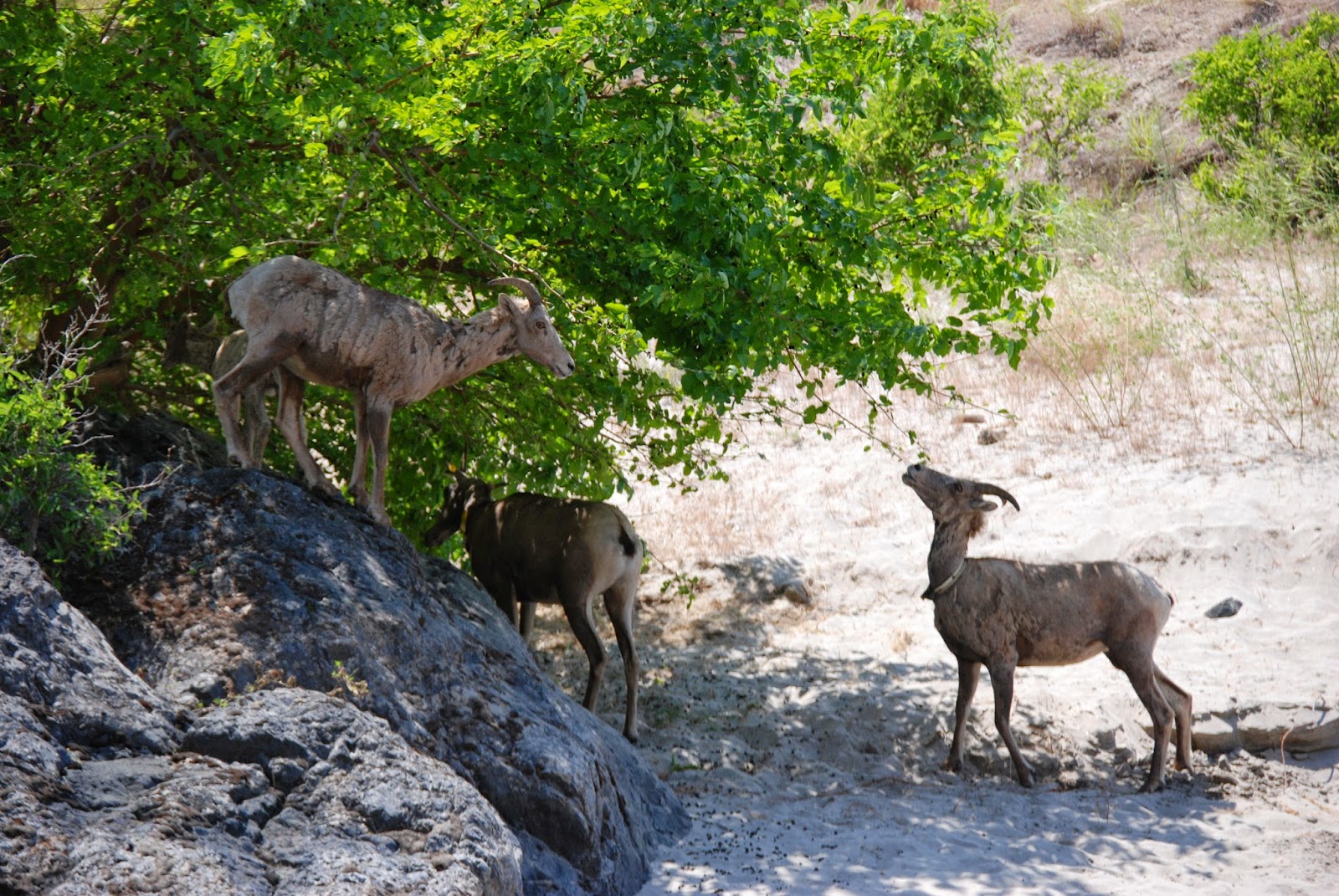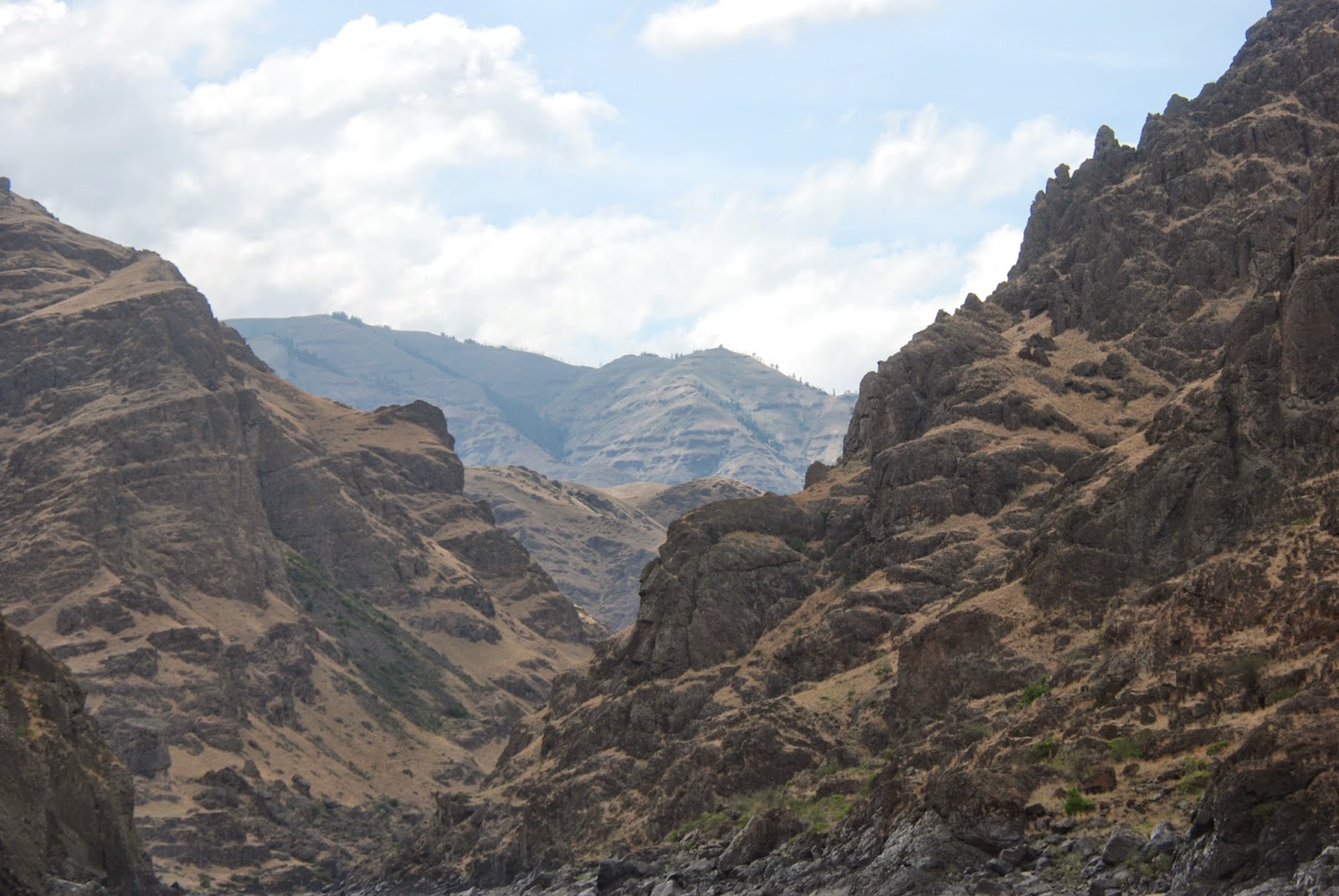Jet Boat Ride into Hells Canyon!
Hells Canyon is a 10-mile (16 km) wide canyon located along the border of eastern Oregon, eastern Washington and western Idaho in the United States. It is part of the Hells Canyon National Recreation Area and is North America's deepest river gorge at 7,993 feet.
The canyon was carved by the waters of the Snake River, which flows more than 1 mile (1.6 km) below the canyon's west rim on the Oregon side and 7,400 feet (2,300 m) below the peaks of Idaho's Seven Devils Mountains range to the east. Most of the area is inaccessible by road.
The geologic history of the rocks of Hells Canyon began 300 million years ago with an arc of volcanoes that emerged from the waters of the Pacific Ocean. Over millions of years, the volcanoes subsided and limestone built up on the underwater platforms. The basins between them were filled with sedimentary rock. Between 130 and 17 million years ago, the ocean plate carrying the volcanoes collided with and became part of the North American continent. A period of volcanic activity followed, and much of the area was covered with floods of basalt lava, which smoothed the topography into a high plateau. The Snake River began carving Hells Canyon out of the plateau about 6 million years ago. Significant canyon-shaping events occurred as recently as 15,000 years ago during a massive outburst flood from Glacial Lake Bonneville in Utah.
In 1806, three members of the Lewis and Clark Expedition entered the Hells Canyon region along the Salmon River. They turned back without seeing the deep parts of the canyon. It was not until 1811 that the Wilson Price Hunt expedition explored Hells Canyon while seeking a shortcut to the Columbia River. Hunger and cold forced them to turn back, as did many explorers who were defeated by the canyon's inaccessibility. There remains no evidence in the canyon of their attempts; their expedition journals are the only documentation.Early explorers sometimes called this area Box Canyon or Snake River Canyon.
The early miners were next to follow. In the 1860s gold was discovered in river bars near present-day Hells Canyon National Recreation Area, and miners soon penetrated Hells Canyon. Gold mining was not profitable here. Evidence of their endeavors remains visible along the corridor of the Snake River. Later efforts concentrated on hard-rock mining, requiring complex facilities. Evidence of these developments is visible today, especially near the mouth of the Imnaha River.
In the 1880s there was a short-lived homesteading boom, but the weather was unsuited to farming and ranching, and most settlers soon gave up. However, some ranchers still operate within the boundaries of the National Recreation Area.
Enjoy the pictures of our jet boat ride
on the Snake River!
Our captain and first mate!
The scenery is amazing - enjoy!
Lets open up the top and let some sun in!
Lots of Osprey and Eagles.
Pictographs on the stone walls
Local art along the way marking the Earl ranch location
We simply flew over rapids as the specially built jet boat has little draft.
This is an old anchor used to hook cables on to for winching the paddle wheelers up the river.
We stopped here for lunch and enjoyed picking and eating cherries and apricots!
Kaye Ann, Kathleen, David, Hazel, Harriet and Lew enjoying the scenery.
Rodney and Ron sitting with me in the shade.
After lunch we boarded the jet boat once more and headed further up the Snake River!
Lots of Sheep!
Kids out playing!
Old abandoned mine!
Hold on as we hit more rapids!
We saw river otters!
And water falls!
Our journey of approximately 59 miles on the Snake River and utilizing approximately 280 gallons of gasoline to power the triple engine jet boat finally ends!
Off to the next adventure!















































No comments:
Post a Comment